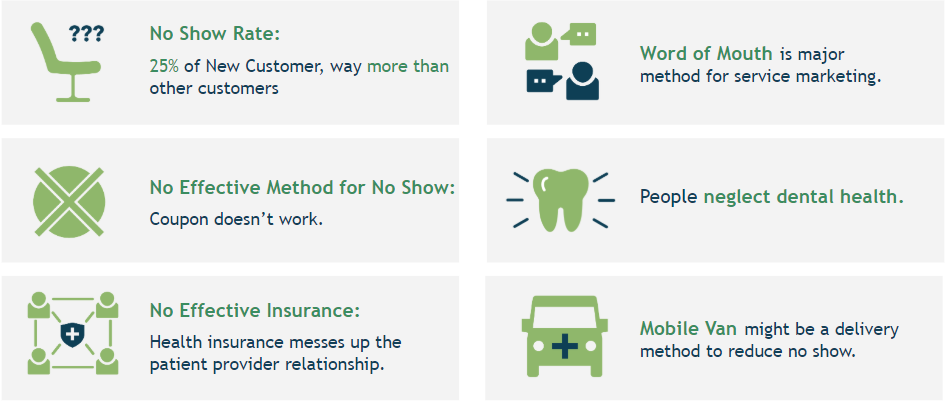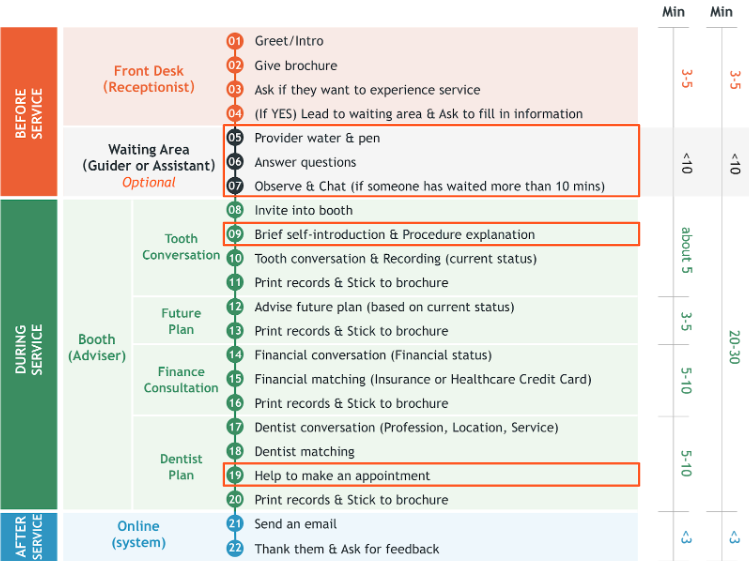$150,000,000,000 Annual recorded losses on the healthcare system because of patient no-show
$150,000,000,000 Annual recorded losses on the healthcare system because of patient no-show
Service Design/UX Design
A collaboration with: Brieana Nestler, Wenqi Zhu, and Wenting Zhu. — Duration: 8 weeks.
My roles: creative lead, research, ideation, user testing, prototype, documentation, analysis.
About
Currently, healthcare services way of dealing with this is by adding no-show fees to patients that don’t arrive at their respective appointment.
Nobody is getting any sort of “win” from this. Services are not getting the amount of money they would’ve won from the appointment and patients are angry because they’re being charged for a service they didn’t get.
A collaboration with: Brieana Nestler, Wenqi Zhu, and Wenting Zhu. — Duration: 8 weeks.
My roles: creative lead, research, ideation, user testing, prototype, documentation, analysis.
About
Currently, healthcare services way of dealing with this is by adding no-show fees to patients that don’t arrive at their respective appointment.Nobody is getting any sort of “win” from this. Services are not getting the amount of money they would’ve won from the appointment and patients are angry because they’re being charged for a service they didn’t get.
Understanding the Process
The information provided underneath will not only show the team’s research methods, but also thought process, insights, methodology, and overall elements taken into consideration for this project. Hereunder, you will find a small journey map depicting the remaining information provided of the project.
Problem Statement
Nobody is getting any sort of “win” from Healthcare Services. They are not getting the amount of money they would’ve won from the appointment and patients are angry because they’re being charged for a service they didn’t get.Research
Based on data we gathered from different research methods, we identified that uncertainty is a big component when it comes to no-shows in healthcare.Uncertainty is translated in many different ways such as not knowing their doctor's name, not knowing how much the patient pays at the end, or not knowing if they need to go to get checked up on something that is treatable without a doctor's help (adding to the fact that many people do not have insurance/ finantial planning).
We understood people's take on their health is "sub-healthy" (Based on the Chinese sentence "亚健康" which defines an intermediate stage between health and disease, which is not quite either status.
arch
Methods used: ︎ Cultural Probe ︎ Focus Group ︎ Internviews︎ Survey

Mapping
A journey map was drafted to visualize where the uncertainty of the patient lands throughout their treatment.We identified that most of their uncertainty lands within the onboarding experience of the patient when choosing a new doctor.

Based on this, we decided to interview a local dentist - in hopes of finding more insights now on the healthcare provider's perspective. And these were our takeaways:

To further the user-centered research on uncertainty and a healthcare provider in hopes of designing a pleasant onboarding experience, we drafted an ecosystem map that depicts the different relationships doctors, insurance companies, financial institutions, and patients will have between each other and with the new service itself.


Introducing Zubi
The mobile dental pop-up that provides you with a quick dental check-up, insurance consultation, and financial planning to find the dentist best suited for you


Zubi's pop-ups will meet you where you are - like next to your office, the gym, or even next to the grocery store.
You start by talking on the front desk - where they'll hand you a brochure with basic details of the service followed by a brief set of questions that the patient fills in once an associate takes you to the waiting area.
After a couple of minutes, one of our specialists will take you to their booth and start by giving you a quick check-up. Zubi will make sure to match you with a proper dentist from their database - informed by your medical history and insurance. If the patient does not have insurance, Zubi will offer other ways to provide financial peace of mind.
A QR code will be located at the back of the brochure, which will give the patient the same info that was provided during the consultation.
After a couple of minutes, one of our specialists will take you to their booth and start by giving you a quick check-up. Zubi will make sure to match you with a proper dentist from their database - informed by your medical history and insurance. If the patient does not have insurance, Zubi will offer other ways to provide financial peace of mind.
A QR code will be located at the back of the brochure, which will give the patient the same info that was provided during the consultation.


Overview of Zubi’s service

